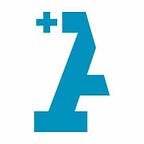Designing A Winning Solution To Support Refugees
Two months ago, Veronica Polinedrio had just completed +Acumen’s Human-Centered Design course when she came across this video online.
The video was part of a global contest to source new solutions for the refugee crisis and the beginning of putting what she learned in the +Acumen course to work.
The challenge spoke directly to Veronica, so she decided to enter the contest with 631 other teams from 70 countries. She was selected to attend a 12-hour workshop where she met her team mates. Last month, a jury — made up of designers, politicians, and representatives of refugee organizations — selected their team as one of the five winners!
We caught up with Veronica, who is also a founding member of Stockholm+Acumen. We talked about her experience and how she is making a dent in the refugee crisis as a professional designer.
“It all started with a google search,” Veronica said. She first discovered +Acumen while writing her Master’s thesis. “I was looking for a way to apply my knowledge of human-centered design to understanding empathy.” In 2013 she gathered a team to take Acumen Leadership Essentials, +Acumen’s very first course that has since been spun out into separate courses.
“I didn’t expect to get as much out of it as I did,” she said. The team continued to take more +Acumen courses, and subsequently founded Stockholm+Acumen as a way to connect the lessons to their community.
It Starts with Understanding
Fast-forward to 2016, Veronica finds herself in the 12-hour workshop, putting her three years of learning with +Acumen into practice. Her team went straight to a Stockholm refugee center to talk to the people for whom they were designing for.
“What became obvious is that they are in this state of limbo,” Veronica said. “As of now, the people living in refugee centers can expect to wait 12 to 24 months before hearing an answer on their asylum applications, and the wait is getting longer every month.”
More surprising than that, was the spirit of the refugees. “What really shocked us is how willing they are to be part of our community. How eager they are to contribute to our society. Yet they are made to be in the state of limbo, where they are restricted to a 200 meter radius around the center.”
The Design Solution
After all the interviews an idea emerged: a “Welcome Card” that acts as a temporary identification card to access language courses, public transport, and cultural sites and events. It would not only help them find useful and official information, but more importantly, give them the peace of mind and dignity to continue planning their lives.
Grand ambitions are always accompanied by obstacles. After several rounds of customer feedback interviews, the team learned that privacy is a top concern for refugees. For ease of implementation, the team designed the temporary cards using RFID technology because it is commonly used across Sweden’s infrastructure, such as public transport, payment transactions and checkout counters. However, it makes it possible for the location of the carrier known whenever it is used at a library or bus station. “Privacy and security is very important for this group,” Veronica said. “The refugees are an extremely at-risk group. The people we spoke to often had to move because of arson attacks.”
The team does not have any expertise to solve this issue just yet, but when we asked if this setback is discouraging, Veronica told me about the team’s unique source of motivation.
“During the development of this project, we have met many extraordinary individuals who have made a meaningful impact on our lives and who truly have driven us to push further. Every time we listen to refugees, we become very happy. They are so enthusiastic about the future and are very excited to contribute to our societies. They have so much joy, and it is such a shame that we can’t open our arms and allow them to be part of our community. So we are also hopeful that with this project, we can make the change we are all hoping for.”
As one of the five winners, Veronica and her teammates are now part of the What Design Can Do Accelerator for the next six months, where they will receive help from the organizers to connect with the relevant government agencies, create a business model, and deliver a complete prototype at the end of December. To make that possible, they will also receive 10,000 euros in prize money.
“I believe that change can occur from the bottom-up,” Veronica said. “Change starts when we have the courage to open our ears and put ourselves in someone else’s shoes; action occurs when we are willing to take risks that are bigger than ourselves to create a new outcome.”
Originally published at www.plusacumen.org on January 12, 2015.
